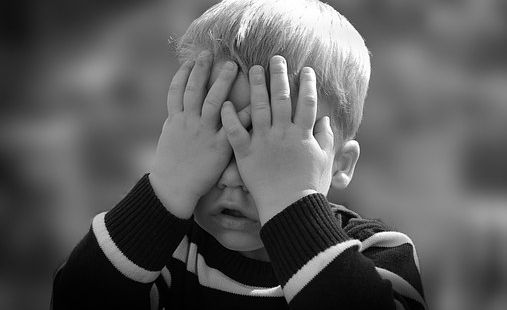Courts generally treat children differently than adults. For example, specific juvenile courts exist to resolve criminal matters involving minors. As another example, the United States Supreme Court has determined the Constitution prohibits the execution of an “adolescent” who commits murder just days before his eighteenth birthday, but permits the death penalty for an “adult” who commits the same crime just days after turning eighteen. See Roper v. Simmons, 543 U.S. 551, 578 (2005). But, what about the civil context? If an 11-year-old girl negligently leaves a pair of scissors on a sidewalk, and you injure yourself by stepping on those scissors, could you sue the girl for her negligence? What if the girl was only four-years-old? The Utah Supreme Court recently addressed this issue in Nielsen ex rel. C.N. v. Bell ex rel. B.B., 2016 UT 14, 370 P.3d 925.
In Nielsen, Ms. Nielsen babysat a boy who was four years and nine months old. During this time, the boy threw a rubber dolphin toy at Ms. Nielsen, which struck her eye. Unfortunately, Ms. Nielsen had previously received a cornea transplant and the strike caused her to lose all vision in one eye. In response, Ms. Nielsen sued the boy's parents for negligent supervision, and the boy himself for negligence. Later, Ms. Nielsen conceded that she had no evidence that the parents had acted negligently, but maintained that a four-year-old could be liable for negligence under Utah law. The trial court agreed with Ms. Nielsen, ruling that the boy was capable of negligence. The Utah Supreme Court agreed to review the lower court's decision.
On appeal, the boy’s attorney argued the court should adopt a “cutoff” age for negligence liability, as other states have done. Specifically, various states have held that children under seven, six, five, or four, respectively, may not be negligent as a matter of law. In contrast, Ms. Nielsen’s attorney argued that Utah courts should resolve a child’s capability for negligence on a case-by-case basis.
In its analysis, the court reviewed similar cases it had decided previously. The court noted its earlier holdings that a jury could find five and six-year-old children negligent. Also, the court recognized its past holding that a four-year-old could not engage in negligent conduct. Thus, the court determined its previous cases marked a “dividing line” between ages four and five, in that “five year olds could have the capacity to be negligent” and four-year-olds could not. In support of this dividing line, the court noted that a leading legal publication states “[a] child less than five years of age is incapable of negligence.”
Additionally, the court found that numerous policy considerations supported this division. For example, (1) “[c]hildren under the age of five have a limited capacity to appreciate how their actions can cause harm to themselves or others and have an inadequate internal ability to control impulses that may lead to injuries;” (2) “assessing a young child's capacity for negligence by placing the child on the witness stand to answer questions about her individual understanding of cause and effect, foreseeability, and capacity for impulse control is problematic to say the least;” (3) “trial examination would likely occur years after the incident when the child has matured, making it difficult for the child to reclaim her earlier state of mind;” and (4) “there is an age below which it is unseemly to subject a child to the judicial process or to adjudicate a child's liability for negligence.”
Based on these findings and policy considerations, the Utah Supreme Court definitively held that “children under the age of five may not be held liable for negligence” and “[t]he question of whether a child five or over is capable of negligence is reserved for the fact-finder, unless a court determines that no reasonable jury could disagree on the issue.” The court conceded that this rule is “imperfect” because “children develop at different rates, and some four year olds are undoubtedly more mature than some five year olds.” However, the court determined that “the advantages of uniformity, consistency, and efficiency justify a bright-line rule, despite its imperfections,” similar to setting an age at which individuals can work, drive, marry, vote, serve in the military, smoke, and drink alcohol.

